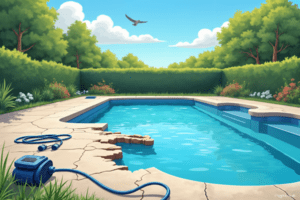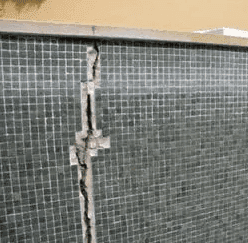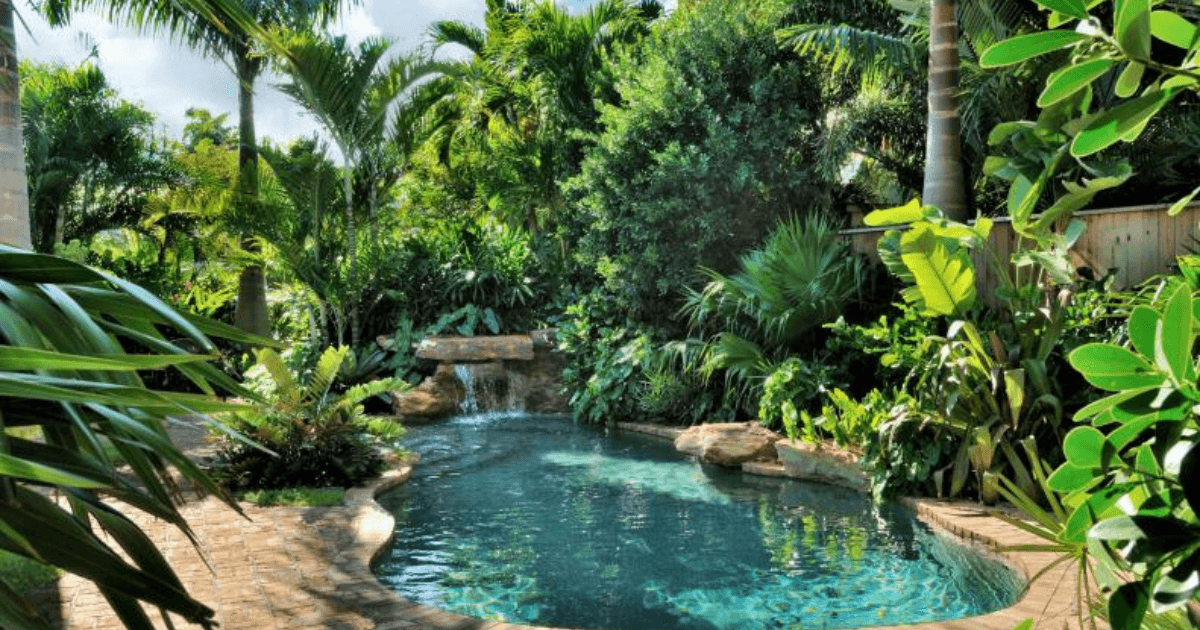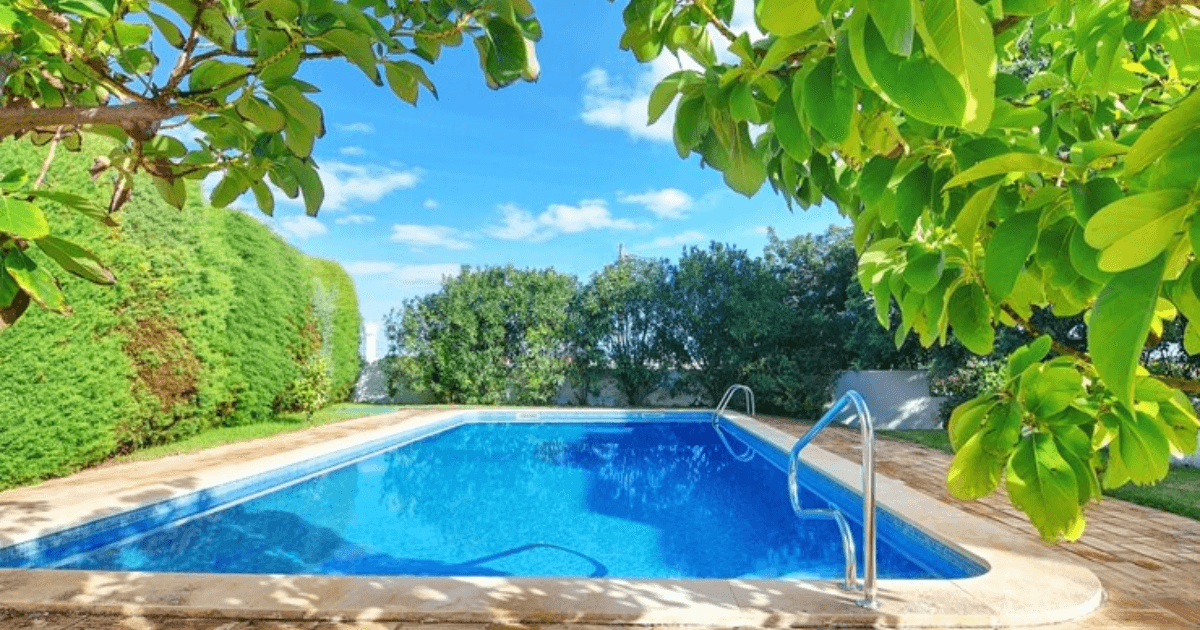Introduction
Knowing that your swimming pool needs maintenance might be stressful; you might believe emptying it is the best fix. Still, If You Drain A Pool Will It Crack? Emptying your pool could cause several unexpected and expensive problems. In this post, we’ll discuss why draining your pool is dangerous and offer better methods to keep it maintained.
The Hidden Risks of Draining Your Pool


Removing the water from a pool also removes the stabilizing factor keeping it in place. Regardless of the pool type, this can lead to a range of structural and financial issues.
Structural Damage Due to Hydrostatic Pressure
Water in the ground exerts hydrostatic pressure on the pool structure. When the pool is full, the water inside balances this pressure. “Draining the pool disrupts balance between hydrostatic pressure”, potentially leading to:
- Cracking or lifting of the pool shell
- Damage to the interior lining or surface
- Shifting or collapsing of pool walls
- Damage to the pool’s coping and surrounding paving or timber work
- The pool “floating” or popping out of the ground due to groundwater pressure
- Damage to built-in systems like in-floor cleaners and pool lights
- Creating safety hazards for people, pets, and wildlife
If You Drain A Pool Will It Crack and Cost You More?
Draining your pool can also have financial repercussions:
- High Water Bills: Refilling the pool calls for a lot of water, which might be expensive, depending on your metered supply.
- Potential fines: Some places have rules against incorrect pool draining, resulting in expensive fines.
Factors Rising Risk
Draining your pool carries different hazards depending on many factors, including:
- Type of Pool: Different materials react differently when emptied.
- Groundwater Levels: High groundwater can increase hydrostatic pressure.
- Age of the Pool: Older pools may be more susceptible to damage.
Specific Risks for Different Pool Types
Above-Ground Vinyl Liner Pools
Empty above-ground vinyl liner pools can cause the liner to shrink or wrinkle. Older liners particularly vulnerable to tearing when refilled cause expensive replacements.
In-Ground Concrete Pools
While concrete pools are robust, they’re not immune to damage. High groundwater levels can push an empty concrete pool upward, causing it to “float” or pop out of the ground. Additionally, the lack of water pressure can lead to cracks in the pool shell.
Fiberglass Pools
Fiberglass pools are lightweight and can easily shift without the weight of the water. Draining them without proper support can result in the pool shell warping or cracking. In some cases, they may even lift out of the ground due to groundwater pressure.
Alternatives to Draining Your Pool
Before deciding to empty your pool, we recommend considering other maintenance options.
Chemical Treatments for Water Quality
Many times, proper chemical treatments help solve problems with water quality. Testing the water and changing the chemical balance can help you to restore safety and clarity without running the dangers connected with emptying.
Professional Cleaning Services
Professional pool cleaners use specific tools to clean pools without removing all the water for ongoing issues like algae blooms or sediment buildup. Learn more about how to clean a Hayward pool filter to maintain optimal filtration.
When Draining Your Pool Is Unavoidable
In some situations renovations or repairs call for an empty pool. In this case, will your pool crack if you drain it? Here’s how to minimize potential damage:
Consult with Pool Professionals
Always consult with a licensed pool professional before draining. They can assess the risks based on your pool type, location, and current conditions.
Use Proper Equipment and Techniques
Professionals use specialized equipment like submersible pumps and can install hydrostatic relief valves to manage groundwater pressure.
Steps to Safely Drain Your Pool
If we’ve determined that draining is necessary, here’s how we can minimize potential damage:
- Check Weather Conditions: Avoid draining during heavy rain, which can increase groundwater levels.
- Monitor Groundwater Levels: We can measure the water table to assess the risk of hydrostatic pressure.
- Install Hydrostatic Relief Valves: These valves allow groundwater to enter the pool slowly, balancing pressure.
- Brace Pool Structure: For fiberglass pools, bracing can prevent warping or shifting.
- Secure the Area: An empty pool can be a hazard. Make sure the area is safe to avoid accidents including humans or animals.
The Environmental and Financial Costs
Draining and refilling process of a pool is not only dangerous but also expensive.
- Water Waste: This process might be environmentally unpleasant and unfriendly, wasting thousands of gallons of water.
- High Water Bills: Particularly if you have a metered supply, filling the pool can dramatically raise your water bill.
- Potential Fines: Some areas have regulations against draining pools into storm drains or onto streets.
Keeping Safety in Mind
An empty pool can pose safety risks. You should ensure that the area is secure to prevent accidents involving children, pets, or wildlife.
Conclusion
Although emptying your pool to handle maintenance problems would sound appealing, the hazards usually exceed the advantages. We suggest looking at other options including expert cleaning or chemical treatments. If draining is required, always see a pool professional to guarantee it’s done safely.
Frequently Asked Questions (FAQs)
Will a pool crack if left empty?
Yes, a pool can crack if left empty for an extended period.
Will draining a pool damage it?
Draining a pool can potentially cause damage if not done correctly.
Will pool plaster crack if left empty?
Yes, pool plaster can crack if the pool is left empty.
Why shouldn’t I drain my pool?
Draining a pool is generally discouraged unless absolutely necessary due to several potential risks and drawbacks






